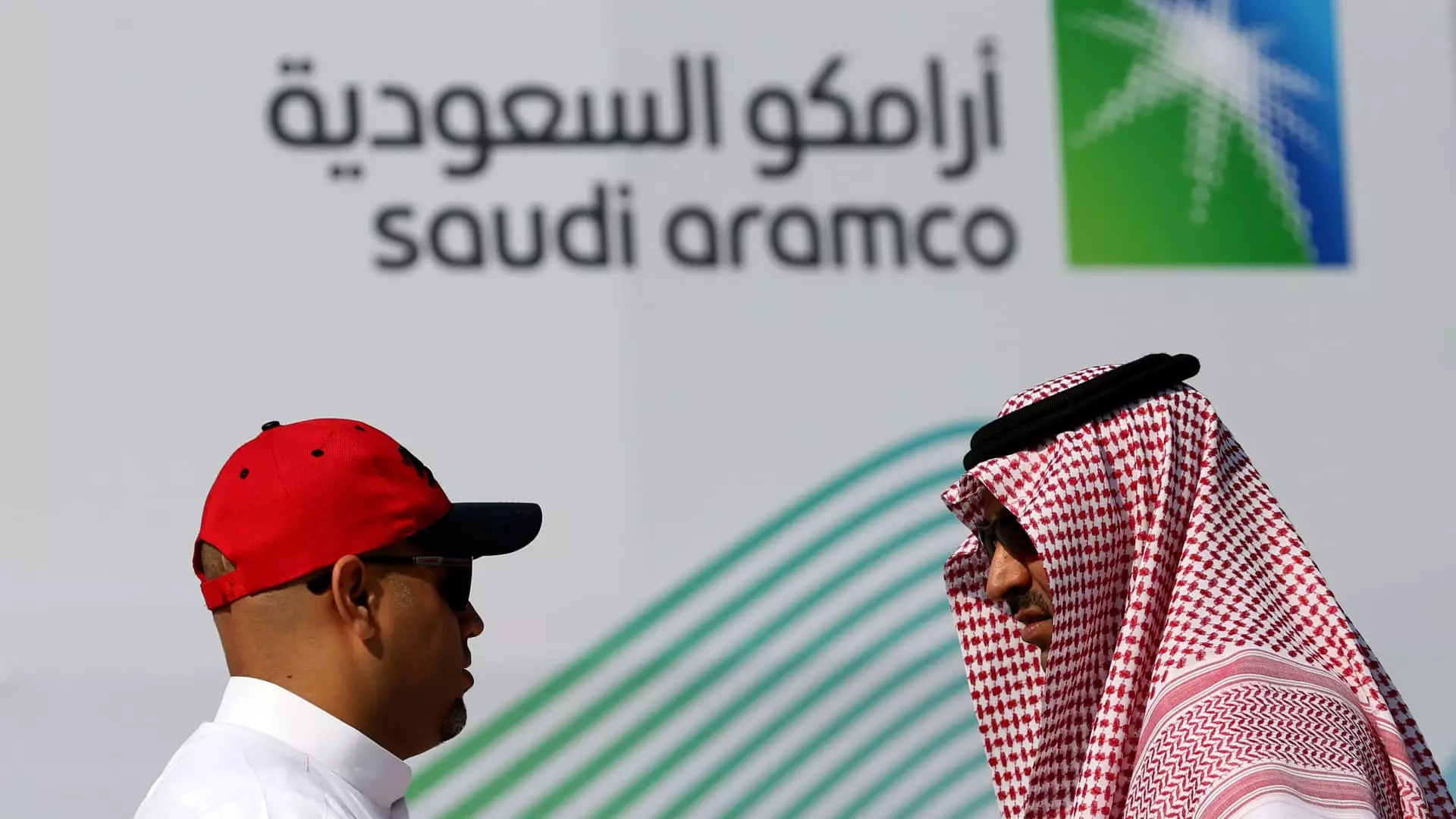The world’s largest oil producer, Saudi Aramco, has recently reported a sobering 5% decrease in its first-quarter net profit compared to the same period last year. With a profit of $26 billion, slightly exceeding analyst expectations, one might argue that the company remains resilient amidst despair. However, this negligible silver lining does little to conceal the larger narrative: a looming storm in the oil markets that threatens both the company and, by extension, the Saudi state’s economic stability.
Much of Aramco’s struggle is attributable to declining oil prices and production levels. In a time when global demand is faltering, the company’s cash flow from operating activities has declined significantly, hitting $31.7 billion as opposed to $33.6 billion a year prior. The pressure mounts as the very foundation of the Saudi economy relies heavily on oil revenues. The implications of these figures extend beyond the corporate structure, infiltrating the very fabric of the Saudi state, which relies on these revenues to fund its expansive social, cultural, and economic ambitions.
Dividends Under Threat
Aramco’s impending decision to slash its performance-linked dividend payout from a staggering $10.2 billion to a meager $200 million is alarming. This radical cut speaks volumes about the company’s financial health. While the base dividend did see a modest rise of 4.2% year-on-year, the total dividend has plummeted from $31 billion last year to $21.36 billion now. Such a decline, despite the technicalities of dividend structuring, reveals a company grappling with the reality of diminished returns and escalating financial strain.
This reduction also raises questions about the wider implications for the Saudi government, which relies on these dividends to navigate mounting fiscal deficits. The kingdom is facing an ominous landscape where costly megaprojects and a precarious global oil market threaten its economic blueprint. The fragility of the oil sector has internal ramifications, as the government’s budget must adjust to a new reality where oil prices struggle to meet the $90 per barrel benchmark necessary to balance the kingdom’s budget.
The Decentralized Dilemma of Global Oil Supply
Market dynamics become increasingly complex when discussions pivot to OPEC+ and its recent decisions. The consortium, which once implemented strategies to maintain stable prices through production cuts, is now at a crossroads, striving to balance market needs with member countries’ economic imperatives. The alarming announcement by Saudi Arabia and its allies to boost production amid tanking crude prices creates a perplexing paradox: more supply is introduced at a time when demand is faltering, effectively exacerbating the issue rather than alleviating it.
Economic forecasting from reputable institutions, including major banks and energy agencies, leans overwhelmingly toward a pessimistic outlook. Morgan Stanley’s revised predictions assert that we may witness a supply glut as staggering as 1.1 million barrels per day in the latter half of 2025, while Goldman Sachs projects a dire average of $60 per barrel—a far cry from the levels needed for fiscal equilibrium in Saudi Arabia. This contrast illustrates a failure to reconcile the necessities of domestic budgets with the inexorable laws of global economic supply and demand.
The Burden of Budget Deficits
The ominous predictions regarding Saudi Arabia’s budget deficits merit scrutiny in the context of these realities. As oil revenues wane, experts foresee deficits potentially soaring from $30 billion to $75 billion if current trends persist. This profound financial imbalance poses critical questions regarding fiscal policy and governance in the kingdom. If oil prices remain stagnant, the government may be compelled to undertake drastic measures—becoming increasingly reliant on borrowing, asset sales, or painful expenditure cutbacks. These factors could undermine Saudi Arabia’s ambitious Vision 2030 plan, which seeks to diversify the economy and reduce reliance on oil.
Aramco’s precarious position mirrors a seismic shift not just within its operations but within global energy markets as a whole. The nexus of oil prices, geopolitical tensions, and market reactions raises an uncomfortable reality for both the corporation and the Saudi state: they are grappling with unpredictable forces far beyond their control, and urgency is paramount in their responses.
In a landscape rife with uncertainty, the once-mighty Aramco faces new challenges, exposing the vulnerabilities of oil-dependent economies in an era characterized by fluctuating energy demands and rising economic pressures. The future remains ambiguous, but one thing is clear: the consequences of today’s decisions will likely echo long into tomorrow’s oil markets.

